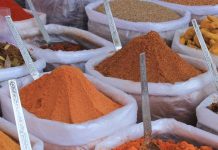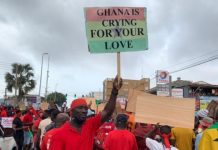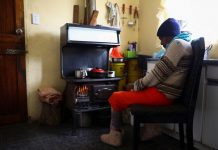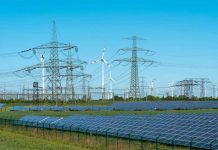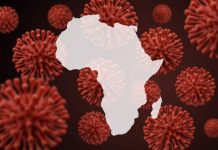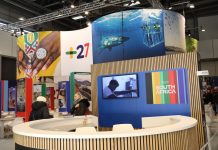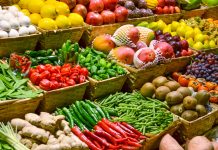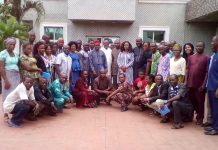She paid back the loan in four months, expanded her business and is now able to send her children to school, with one of them studying at the university. Sylvie now cultivates 2.5 hectares of land and employs five permanent staff and six support staff. Her business has grown to the point where she is able to harvest 16-20 tons of tomatoes every season.
Through the Saemaul Undong Model Village project, the African Development Bank, the Korea-Africa Economic Cooperation (KOAFEC) Trust Fund and the Government of Cote d’Ivoire have transformed the economies of two villages and improved the lives of 2,961 inhabitants like Sylvie Zounon in Zatta and in N’gbekro, two villages near Yamoussoukro, the country’s capital.

Villagers in the participating communities have moved from mud to brick houses. They sell their own produce and make more income than they ever dreamt of. They have access to new markets, clinics and are able to send their children to school.
Similar projects have been launched in Ethiopia and the Democratic Republic of Congo.
The Saemaul Undong Model Village initiative is designed to share Korea’s economic development experience with a focus on agricultural and rural agricultural development.
Objective
The development objective of the Saemaul Undong initiative is to enhance equitable distribution of income, agricultural production, and improve the environment and local infrastructure using a community-based, participative approach.
Beneficiaries from the villages received training on group dynamics, report-writing, resource mobilization, basic accounting, microfinance, women’s and children’s rights, along with the monitoring and maintenance of the projects themselves.
Training in Korea on the Saemaul Undong (…)Read more
Impact
The project has benefitted more than 2,961 inhabitants from the two villages, Zatta and N’gbékro. Beneficiaries experienced unprecedented harvests. Cassava production increased from 20,000 kilograms to nearly one ton annually; tomatoes from 50,000 kg to 1.5 tons annually; and, for the first time ever, 30,000 kg of rice was produced thanks to irrigation methods introduced by the project.
Villagers are also practising modern techniques to raise pigs and chickens.
Kouassi, a tomato farmer in Ngbekro village, started with 500 square metres of land and a loan of $400. He now cultivates 1.5 hectares of land and harvests about 15 tons every season. He plans to increase to four hectares and employ more workers.
With his children now enrolled in school, Kouassi’s family lives well compared to the situation of his household before he took part in the Saemaul Undong Model Village initiative.
Many other families who benefited from the scheme realized significant increase in incomes, particularly for female-headed households, with a widow’s monthly income increasing from 20,000 CFA francs (about US $35.60) to 300,000 CFA francs (about US $533.60).
Increases in women’s income were largely attributed to the project’s capacity development in agricultural techniques and micro-finance operations.
The villages also demonstrated reversal of youth rural-urban migration. Some young farmers who had previously settled in Abidjan, the country’s economic capital, returned to the farms to participate in agribusiness and increase their income levels.
Irrigation dams, schools, toilet facilities, teachers’ housing, medical centres, hectares of cassava and tomato farms, poultry and pig farms, childcare and youth centres, offices for the village micro-finance operations, and markets were among the facilities provided by the project.
The enduring success of the Saemaul Undong Model Village projects three years after completion serves as testimony to the sustainability of its approach, outputs and long-term impact. The project continues to enhance equitable distribution of income, agricultural production and improve the environment and local infrastructure using a community-based, participative approach.
The key lesson learned was the change of mentality of actors based on the Saemaul Undong philosophy of diligence, self-help and collaboration is permanently engraved in the villagers’ approach to improve the quality of their living standards.
Today, the Bank is steadily collaborating to roll out the project across the continent, one country at a time, in partnership with the Saemaul Undong Global Foundation. On a larger, more strategic scale, the Bank has rolled out Staple Crop Processing Zones in several countries and these are supported by Saemaul Undong Model Villages. The goal is to support large-scale food production; create income and employment opportunities in the rural areas; contribute to lowering the cost of food; enable the constitution of large stocks of food products from which export becomes possible; and enable competitiveness and compliance with international standards that are essential for participation in global value chains.
Impact in Ethiopia and the DRC
The African Development Bank launched the Saemaul Undong Model Village projects in partnership with the Government of Korea in 2011. The first project was successfully completed in Turi Goda village, Becho District in the Oromia region, 75 kilometres southwest of Addis Ababa, in Ethiopia. The project included a four-kilometre village road located on “vertisols” (clay and swampy soils) to facilitate the transportation of people and farm products. Ten domestic water supply wells constructed in the area as part of the project have also had a positive effect on health, especially among women.
The Ethiopia project also supplied electricity to 300 households using solar power. Other deliverables included the domestication of farm animals for produce, the construction of a school library and youth centre, and the establishment of a village credit/microfinance institution to enable farmers to purchase agricultural inputs.
Similar results had been achieved with the Saemaul Undong initiative in the Democratic Republic of Congo where 1,075 people from four villages – Kinseki II, Mbungu, Menga and Kinsendi – have benefited.
“Saemaul Undong” means the “New Community Movement” or the “New Village Movement” in Korean. It focuses on local community development with diligence, self-help and cooperation as its guiding ethos. The goal: for the Saemaul Undong-inspired development approach to be applied at the country and regional levels and for it to have a domino effect on socio-economic growth.
Source: Africa Development Bank



